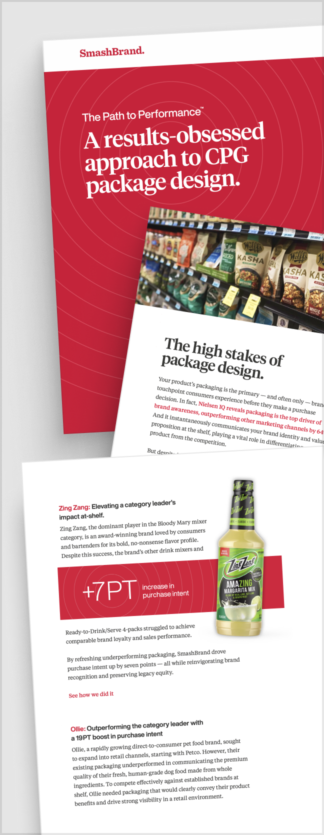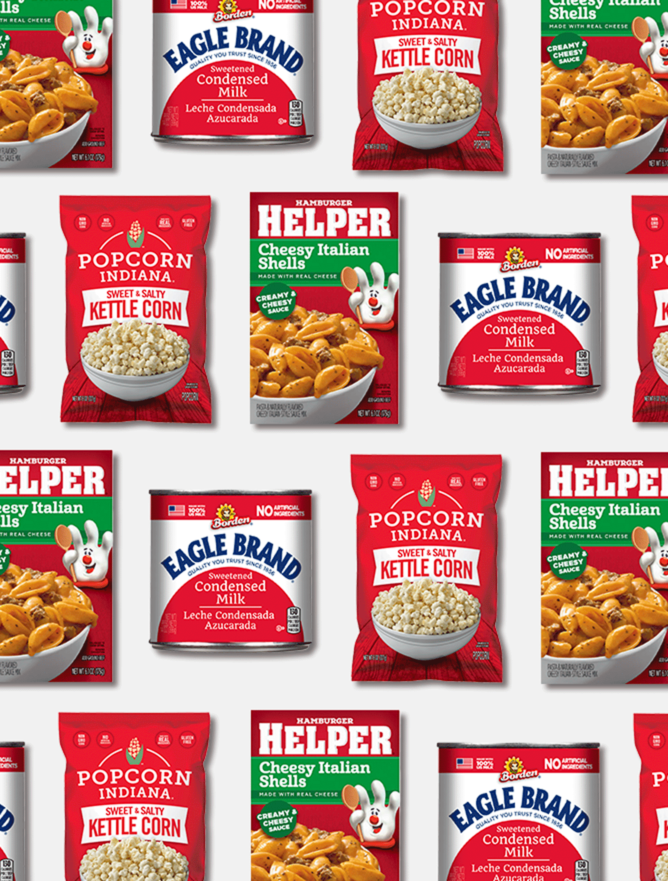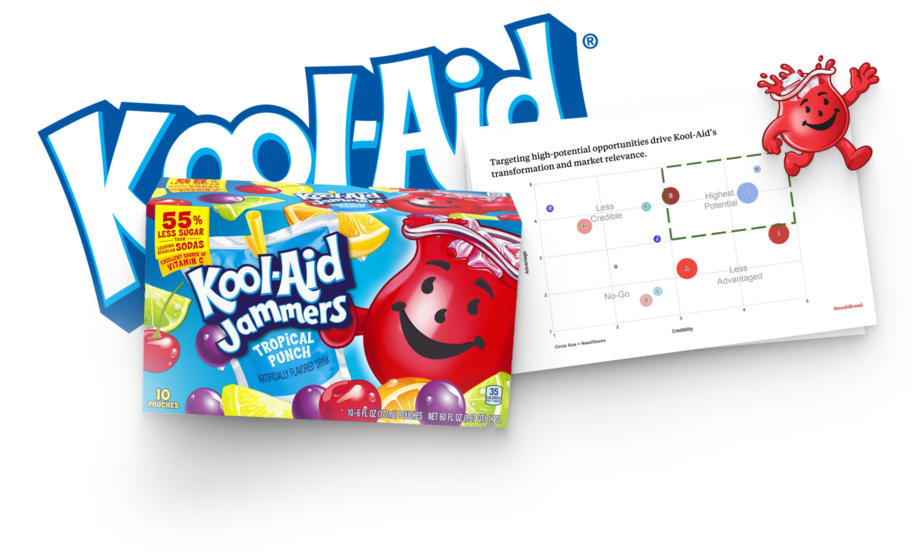Having one great product isn’t enough to scale, sustain memorability, or satisfy retailers anymore. The way it fits into a more prominent brand system often determines its success. Misaligned new product launches create confusion, dilute brand equity, and struggle to gain traction without a clear brand architecture. Inconsistent branding impacts revenue—brands that present themselves cohesively can see a 23% increase in revenue.
Brand architecture isn’t just about organizing SKUs; it’s about creating a structure that drives innovation and growth. By defining the relationships between your master brand, sub-brands, and endorsed brands, you provide clarity for consumers and cohesion for marketing. This is more important than ever, as over 60% of Millennial and Gen Z consumers prefer brands that reflect their values.
This article explores how a monolithic or hybrid brand architecture strengthens your parent brand, enhances sub-brand performance, and builds a future-proof brand strategy that drives market success.
Why brand architecture is critical for CPG brands.
Consumer trust is crucial. In fact, 81% of consumers need to trust a brand before considering buying from it. Companies must ensure brand identity, packaging, and messaging consistency to gain this trust. Consumers walk away if a brand feels disconnected, confusing, or cluttered.
That’s where brand architecture comes in. A well-structured CPG branding system ensures that every new product launch, sub-brand, and packaging refresh aligns with the bigger picture. It creates clarity, builds brand awareness, and drives sales. Even the best CPG marketing campaigns will struggle to convert without a strong foundation.
Now more than ever, CPG companies need to rethink their brand structure. Here’s why:
The CPG market is continuously evolving.
Brands need the flexibility to innovate without losing clarity. Trends shift overnight, and what worked last year might be outdated today. The most successful brands are not just growing; they’re evolving.
A flexible brand strategy allows a company to expand into new categories, test innovations, and update its brand positioning without losing its core identity. Brands that foresaw the need to build flexibility into their product branding strategy seamlessly introduced new product lines without confusing their audience.
A strong brand management system ensures that innovation is planned, not reactive. It provides the framework for a brand to expand, diversify, and lead the market instead of chasing it.
Retailers prioritize brands that scale efficiently.
If a brand looks cluttered, gaining new facings becomes harder. Shelf space is like a battleground for brands. Retailers don’t just look at demand; they look at brand identity and organization. If a brand is scattered across multiple packaging designs, inconsistent in brand voice, or has unclear brand positioning, it’s harder to justify additional facings.
For example, two brands with products in two similar categories sit side by side in a beverage aisle. One has a transparent, structured consumer product branding system that makes every product feel connected. The other has mismatched logos, different fronts, and no clear differentiation between product lines. Which one is more likely to get expanded shelf space?
Retailers bet on brands that make shopping easier for consumers. A clear CPG branding structure, whether monolithic, hybrid, or a house of brands model, ensures that every product reinforces the master brand rather than competing with it. The result? More visibility, better placement, and higher sales.
Marketing budgets get wasted without a strong system.
CPG marketing isn’t cheap. Launching a new product, repositioning a brand, or designing new packaging takes significant investment. But when a brand lacks a structured strategy, marketing efforts can end up cannibalizing sales instead of driving them. Here’s how it happens:
A company launches a new product with a different packaging design and an unrelated message, hoping to target a new audience. Instead, it confuses loyal customers who don’t recognize the connection to the parent brand. As a result, the product gets weaker sales performance, wasted advertising costs, and lost brand loyalty.
Now, compare that to a brand with a well-defined product branding strategy. Every campaign builds upon the master brand’s equity, reinforcing trust and recognition. Remember, you only have 10 seconds to capture your audience’s attention with your design, and a fragmented brand makes that nearly impossible.
A practical brand management framework ensures that every marketing cost adds value rather than creating competition with the brand portfolio.

Path to Performance™
Taking a results-obsessed approach to CPG package design.
Learn how SmashBrand’s proprietary process – rooted in scientific principles, informed by data, and validated by your target audience – takes the guesswork out of package design and delivers guaranteed results.
"*" indicates required fields
The three main brand architecture models.
The CPG industry thrives on clarity. Consumers make split-second decisions, and brand recognition plays a massive role in those choices. A solid CPG branding strategy depends heavily on choosing the appropriate brand architecture. The structure you select influences everything from how quickly consumers recognize your products to how seamlessly you can introduce innovations. Let’s break down the three primary models and why they matter.
The branded house model.
In a branded house architecture, one strong brand name carries the weight of the entire product portfolio. Think of Kellogg’s—every product, from Corn Flakes to Rice Krispies, reinforces the master brand. This model excels when brand value is established because each product benefits from the parent brand’s equity.
The simplicity of this structure drives rapid brand recognition. Consumers don’t need a learning curve for new product lines. If they trust the master brand, they’re more likely to try related products. This setup also ensures that brand messaging remains consistent across all touchpoints. With a unified voice, marketing efforts become more efficient, and the supply chain can also benefit from streamlined packaging and production processes.
A branded house works best when line extensions or sub-categories are natural progressions of the core offering. But, it demands rigorous brand audits to ensure innovations align with existing consumer perceptions. A misstep in product alignment could weaken the entire brand’s reputation, so each move requires precise brand assessment to avoid dilution.
The house of brands.
The House of Brands model is designed for versatility. In this structure, a parent company owns a portfolio of independent brands, each with its own identity. Procter & Gamble (P&G) is a classic example of managing brands like Tide, Gillette, and Pampers. See how multiple brands operate without overt ties to the parent name.
This model is ideal for companies targeting different market segments, pricing tiers, or consumer preferences. If one brand aims for premium status and another targets value-conscious shoppers, separating them preserves each brand’s value proposition. It also allows for disruptive innovation. A risky new product won’t damage the perception of other brands under the umbrella if it doesn’t resonate.
But a house of brands comes with complexity. Without a unified identity, marketing efforts can become resource-heavy. Each brand requires distinct campaigns, packaging strategies, and supply chain adjustments. To ensure profitability, companies must conduct regular brand audits and brand assessments to determine which brands deliver sustained brand value and which dilute resources.
The hybrid model.
The hybrid model combines the best of both worlds: It leverages the strength of the master brand while giving specific sub-brands enough independence to stand independently. PepsiCo is a standout example, with brands like Gatorade and Quaker operating under its umbrella yet maintaining distinct market identities.
This approach is the most flexible for companies looking to innovate across multiple categories while benefiting from overarching brand recognition. It allows certain products to capitalize on the parent brand’s equity, enhancing brand value while enabling others to develop unique voices tailored to specific consumer needs.
The hybrid model shines when managing complex product portfolios. It supports brand messaging customization without entirely severing ties to the leading brand. This flexibility is invaluable in the CPG industry. For example, if a CPG company introduces a healthier product line, it can maintain its connection to the core brand while differentiating messaging to appeal to a new audience.
Why choosing the right model matters.
A mismatched brand architecture creates inefficiencies, such as wasted marketing budgets, fragmented brand messaging, and operational bottlenecks. On the other hand, the proper structure builds sustainable brand value, strengthens consumer trust, and provides a roadmap for future innovations.
The appropriate model depends on your brand’s growth strategy, target audience, and risk tolerance. Comprehensive brand audits and assessments are non-negotiable when making these decisions. The goal is always the same: clear brand recognition, seamless scalability, and long-term dominance in the CPG industry. Choosing wisely means your CPG branding strategy doesn’t just survive market shifts—it thrives through them.
The biggest brand architecture mistakes that kill innovation.
A well-structured brand architecture is the backbone of effective branding and continuous innovation. But even the most promising brands stumble when their architecture fails to support growth. Innovation doesn’t happen in a vacuum; it requires a clear product positioning strategy, aligned messaging, and a structure that resonates with the target consumer.
The following are some of the most common brand architecture mistakes that kill innovation and how to avoid them:
Creating too many sub-brands too fast.
Launching sub-brands is a quick way to capture new markets. But, expanding too fast often creates complexity instead of value. Every new sub-brand demands its own marketing strategy, packaging, and brand storytelling. Without a clear connection to the parent brand, consumers become confused.
In reality, consumers don’t have the patience to decode disjointed portfolios. If a new product doesn’t fit into an existing structure, it risks losing relevance. Brands must ensure that new launches align with the core product positioning strategy, strengthening the overall brand rather than competing with it.
Innovation works best when it builds on existing brand loyalty, not when it tries to reinvent the wheel. A disciplined approach keeps the architecture streamlined and consumers engaged.
Structuring based on internal teams instead of consumers.
Brand managers sometimes structure portfolios around internal divisions—R&D, marketing, or product development. But consumers don’t see corporate hierarchies. They see product relevance. For innovation to thrive, brands need a deep understanding of how products fit into the consumer’s world. Decisions must be driven by target consumer insights, not internal convenience.
Successful brands map their architecture based on purchase behavior and lifestyle alignment. If consumers can’t quickly grasp where a product fits, innovation efforts won’t stick. Aligning architecture with brand storytelling ensures every product speaks the language consumers expect.
Lack of innovation-ready hierarchy.
Not all products are created equal. Brands need a clear hierarchy to signal premium, core, and entry-level offerings. Without it, new launches get lost in the shuffle. Hierarchy clarity also supports co-branding opportunities and helps consumers instantly recognize each product’s value proposition.
For example, a premium line should have distinct packaging and messaging that reflect premium quality while entry-level products remain accessible. An innovation-ready hierarchy allows brands to explore new segments without diluting the master brand. This clarity drives brand loyalty, as consumers know what to expect at every tier.
Inconsistent visual and messaging architecture.
Innovation can’t succeed if it’s visually disconnected from the rest of the brand. Individual brands within a portfolio must follow consistent design and messaging principles. Disjointed packaging and mixed brand storytelling confuse consumers, weakening brand loyalty and reducing shelf impact.
A cohesive visual identity builds instant brand recognition. Innovations struggle to gain traction if the design and messaging don’t align with the marketing strategy. Consistency across touchpoints supports new product success and reinforces the overarching brand understanding that builds long-term loyalty.
How to build a brand architecture that supports innovation and growth.
A strong brand architecture strategy involves creating a framework where innovation thrives. This means structuring brands so new launches, line extensions, and category expansions feel natural and cohesive for CPG food brands and other consumer-focused companies.
Innovation without structure leads to confusion. But when brands align product branding and marketing with clear architectural principles, every new product strengthens the brand instead of diluting it. Here’s how to build a brand architecture designed for both growth and innovation:
Start with a consumer-centric structure.
Consumers don’t shop based on corporate divisions; they shop based on brand relevance. The strongest brands understand how shopping behavior should define their brand structure.
This means conducting deep research into purchase drivers, shopping behavior, and category preferences. Understanding shelf placement, impulse buys, and routine purchases is crucial for CPG product brands. If your architecture doesn’t reflect how consumers naturally group products, you risk losing them on the shelf.
By aligning brand structure with consumer expectations, brands ensure that every product, from endorsed brands to sub-brands, fits seamlessly into the shopper’s decision-making process. This consumer-first approach eliminates common branding mistakes that slow growth and confuse buyers.
Use data to validate every decision.
Guesswork kills innovation. For big CPG brands, data validation means assessing market potential, ensuring a reason to win, confirming supply chain readiness, and aligning with corporate objectives. No trial launches—only large-scale rollouts backed by PREformance® purchase intent testing to minimize risk.
Founder-led brands take a nimble approach—using A/B testing for packaging, trial launches in select markets, and direct consumer feedback to refine products under a strong brand identity. No matter the size, data-driven decisions ensure innovations resonate with the target audience and outperform competitors.
Ensure flexibility for future innovation.
Rigid structures kill potential. Brands need a framework for future growth, whether through line extensions, new sub-brands, or premium product tiers. A flexible brand architecture strategy allows brands to pivot when market demands shift. For example, CPG product brands should create clear differentiation between core offerings and premium products, making it easy for consumers to trade up without confusion.
Integrate brand and product positioning from the start.
Every innovation should feel like a natural extension of the brand—not an afterthought. Successful brands align brand personality with product branding and marketing from day one.
For CPG food brands, this could mean ensuring that health-focused sub-lines retain the brand identity consumers trust while tailoring messaging to highlight the new product’s unique benefits.
The key is consistency. Everything, from corporate brand messaging to individual product stories, should flow seamlessly. Innovations that don’t align with the core brand message create confusion and weaken the strong brand perception you’ve worked hard to build.
Design with retail & e-commerce in mind.
A brand’s architecture must work across all channels. How a brand looks and feels on a shelf should translate effortlessly to digital platforms. In 2025, brands that fully invest in omnichannel strategies are projected to retain an average of 89% of their customers.
This means designing sustainable packaging for CPG product brands that stands out in physical stores and thumbnail images online. Visual consistency builds trust and drives brand recognition, while clear architecture ensures consumers understand how new products fit into the brand family.
Content marketing strategies should also complement in-store messaging, reinforcing brand architecture and helping consumers connect the dots between products, categories, and corporate brand values.
Future-proofing your CPG brand.
Strategic brand architecture is the key to future-proofing a CPG brand. It’s not just a marketing choice—it’s a blueprint for sustainable growth. Leading brands don’t wait for declining sales or confused consumers; they design scalable, high-performance structures from the beginning.
Whether you choose a branded house, house of brands, or hybrid model, success depends on clarity, flexibility, and data-driven decisions. SmashBrand ensures your brand is structured for long-term market dominance through competitive analysis, branding expertise, and our proprietary PREformance® purchase intent testing.
Ready to future-proof your brand? Let’s build a structure that drives sales and outperforms the competition—guaranteed.

Nice Package
Don’t miss out on our monthly newsletter Nice Package!
Each month, we deliver a data-driven newsletter directly to your inbox, unpacking a critical topic in the FMCG & CPG industry.
"*" indicates required fields
Subscribe to
Nice Package.
A monthly newsletter that unpacks a critical topic in the FMCG & CPG industry.
Free Resource.

CPG product repositioning guide.
Explore the five undeniable signs your CPG product needs repositioning along with strategies for leveraging consumer insights for a guaranteed market lift.
Learn More About CPG product repositioning guide.


